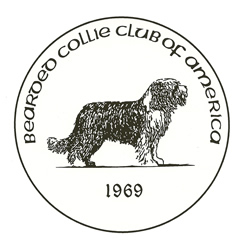© Chris Walkowicz
Mostly, it’s something as subtle as less layback of shoulder than we’d like, poor ring attitude, not enough length, narrow in skull, short in muzzle, mismarked, something it would take a knowledgeable fancier or judge to discern. Occasionally, it’s a white.
But I feel the following best describes it:
To true dog lovers the word ‘pet’ is synonymous with ‘dog.’ They cannot imagine being without one.
Most people don’t realize breeders classify dogs into two groups — pet (companion) and show. And most people start out wanting nothing but a companion. But, when they hear about the two classifications, they fear perhaps they are getting an inferior dog if they ask for a pet. To a professional breeder, the terms mean something different. A show puppy is the one that has the best chance of finishing its championship in competition, and a pet is one that probably won’t. A breeder’s desire is that each of the pups will be somebody’s beloved companion. Pet or show, they want the best for each pup. They hope the buyer will love this pup the way they have.
It would be to a breeder’s advantage if every pup were a show prospect, but that doesn’t work out in the percentages. It is much more likely the litter may turn out all pet than all show. So exactly what classifies a dog as a pet?
A pet has the same number of legs as the show dogs. It’s put together with the same number of bones, has a noisemaker located just under its nose, a fast-licking tongue, and sheds hair just like show dogs. So what’s the big deal?
There are several imperfections that can turn a prospective show puppy into a good pet. Among these are coat texture and length, poor markings or mismarkings, orchidism (undescended testicles), attitude and bite (dentition).
What may be confusing to the buyer is that what is a no-no in one breed is a ‘must have’ in another. An all-white dog in German Shepherds or Bearded Collies is undesirable. Yet that’s just what a Samoyed or West Highland White Terrier breeder wants. Long-coated Corgis are not shown, but a long-flowing coat is an Irish Setter breeder’s dream. These little differences are exactly what makes a pet.
A pup’s coat may be silky rather than harsh, long rather than short, smooth rather than fluffy, curly rather than straight — or vice versa. Obviously, dogs with these flaws can still be outstanding companions, as a coat has nothing to do with good health and temperament.
If a bite is overshot or undershot, even or wry, it doesn’t make much difference to the pet owner. The owner of a companion dog is much more concerned about “Will he or won’t he” bite, than an Andy Gump bite. Missing teeth may also mark a dog as a pet, although these usually do not show up until late puppyhood. Unless it’s all the teeth that are missing, that dog will happily chomp his food on your hearth.
Orchidism is said to be the ideal pet fault. Only you and the veterinarian know for sure. The common term ‘monorchidism’ is used for one undescended testicle, and crytorchidism identifies both as undescended. Again, this has nothing to do with whether or not the dog is a good pet. In fact, since dogs that are not close to breed standard should be neutered, a dog with orchidism will be no different than any other pet after the surgery.
Attitude simply means the dog does not have enough sparkle to win in the ring. Actually, those dogs who do not have the extra zip and animation for life on the dog show circuit are sometimes easier for the average person to live with.
Some breeds specify no preference in markings, Old English Sheepdogs and St. Bernards, for instance. Others, such as Shetland Sheepdogs or Welsh Corgis, have minimal requirements. Still others — like Dalmatians and harlequin Great Danes — must meet definite specifics. Color or pigmentation is highly important in some breeds. Pale eyes or washed-out color will not offend a doting owner, but are a distraction to a judge.
Ears that are too high set or don’t stand or don’t ‘fold’ may zap a show career, but that dog can still hear a chewbone drop a mile away, and he can hear his master’s voice. At the other end, tails may be low set or carried too gaily over the back, but they still wag the same when you walk in the door.
A dog which is undersized or oversized for the show ring may actually be ideal for the pet owner who really wants a Belgian Tervuren, but prefers one that could sit in his or her lap. Another owner may want a Tibetan Spaniel who strikes fear into the heart of an intruder and looks like he’d do something more than nibble an ankle.
The differences between a show dog and a pet may not be obvious to the untrained eye. Examples are infinitesimal flaws in movement, angulation or extension of gait. Without a period of intense study, most observers will never know.
Although these and other points may matter a great deal to the professional breeder and/or exhibitor, they won’t mean a whit to the person just looking for a good friend. After all, we don’t judge our human friends by the length of their hair, their color, their overbite or how fast they can run the mile. So a pet’s not perfect, just like us. But, most importantly, a pet is a dog God made for love.




